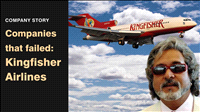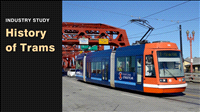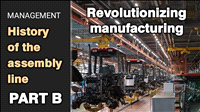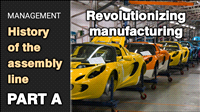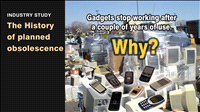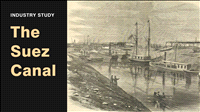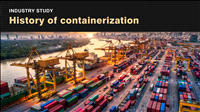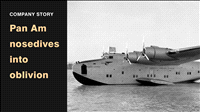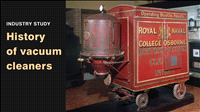History of containerization | Industry study
By Kiron Kasbekar | 05 Dec 2022
I am going to talk about the history of containerization, the system that revolutionized the way in which things are transported around the world across oceans and by rail and road.
Two men who made the containerization revolution
How they traded in the past
Think of the world a few thousand years ago when people of different regions began trading with one another.
They didn't have the technologies we have today. But can you imagine their being able to trade without using some form or other of repository, amphorae, bags, barrels, bundles, drums, sacks, tubs, or other small and big form of storage of varying sizes to transport goods over long distances?
Without such means, transporting goods across countries and from one country to another would have been next to impossible.
So the means I described a little earlier were the means by which goods would be transported across long distances over land and sea. Then, a little over 65 years ago, a new form of storage came into being, called containerization, along with what is known as multi-modal transport.
And this form has steadily pushed out the other means in global trading. Today an estimated 90% of the world's goods are transported by sea – and about 60% of them are transported in containers. The long list of things transported in containers includes fresh and canned foodstuffs, electronic goods, domestic appliances, smartphones … virtually everything that is moved across oceans.
What doesn't go in containers? The answer is: mainly bulk commodities, which means stuff like grains, iron ore, petroleum, et cetera. But that is the only way those things can be moved in vary large bulk spaces like tankers and holds.
So what is containerization?
Back in the 1950s if someone said the word 'containerization', most people would have thought that she was referring to the packing of tea, coffee, chocolates or biscuits in a tin container, or milk, wine or medicine in a bottle.
This may sound odd to us now, but in those days many consumer products used to be packed in tin or glass containers. In developing countries like India, most products would be scooped out of larger containers in which shops stored them, weighed by the pound or kilo on weighing machines, and then packed in paper bags or in cloth bags that their customers brought with them.
Less and less people now buy stuff 'loose'; so the question of weighing on scales does not arise. The packs or bottles have the weights printed on them. Tins have more or less completely lost out to laminated paper, and plastic. Glass is used less and less.
The word 'containerize' began to be used only about 70 years ago. But it didn't start out with the meaning: "to put in a tin of tea, coffee, chocolates or biscuits or in a carton of milk, or a bottle of wine". Nobody ever visited a shop and said, "please containerize my tea, or give me a container of tea."
They'd just say, "Please give me a kilo of tea", or "Please give me a box of tea" … or a tin of biscuits, or a bottle of milk.
The word 'containerization' meant, from the beginning, which was sometime around 1956, the stuffing of big steel cases with goods – usually an assortment of packages of things to be transported to a common destination.
So, the word 'container' acquired a new meaning in the world of shipping. And the word 'containerization', which was, in fact, a new word, clearly and specifically meant one thing: shipping stuff in big steel cases called containers.
The containers we are talking about are big, standardized steel boxes of certain standard sizes, with the fittings required for them to be secured and fitted alongside or on top of one another on a ship's deck – or to be stacked high at the docks before they are sent on their way across oceans to other ports, or to inland destinations on trucks specially designed to carry such containers.
Before we embark on a trip to explain the basics of containerization, let me show you a photograph of what a modern shipping container looks like. You must, of course, have seen containers like this on the roads of your city or on the highways; but you may or may not have known what they are called.
If you ever ventured near a port you may have witnessed a scene like this:
If you ventured closer, you would have seen what the container really looks like.
Ah! And if you happened to be in a helicopter you might have seen a spectacle like this, at the dockyard:
Oh, I love this picture. Considering how the scene has been lit up by the setting sun, and how the photographer has framed the shot, you could frame this photo up as a piece of art!
So how did the story of containerization unfold?
This is how:
The first container journey began on 26 April 1956, when a ship called the Ideal-X left the Port of Newark, in New Jersey, on the east coast of America and reached Port Houston, Texas, in the south, five days later.
It was a great event for the shipping business – but not appreciated by everyone who watched it happen. As the container-laden ship left port, Freddy Fields, a top official of the International Longshoremen's Association, the port workers' union, was asked his opinion about the ship.
Fields' reply says it all: "I'd like to sink that son of a bitch."
I'm not sure whether Fields was referring to the ship or the man who launched it, Malcolm McLean. Neither of them sank. McLean flew to Houston to be on hand when the ship safely docked.
Malcolm McLean? Where did this McLean come from?
Not from any marine background. He was a trucking magnate with no previous experience with ships. But he was a man brimming with inventive ideas.
McLean and his sister, Clara McLean, and brother, Jim McLean, had founded their family trucking business in 1934, which they called the McLean Trucking Company.
McLean Trucking was based in Winston-Salem in North Carolina, known for the Winston-Salem cigarette brand, and started its business hauling empty tobacco barrels. Malcolm was one of the first drivers.
Soon McLean expanded his business by acquiring more trucks and hiring drivers to drive them. By the 1960s, McLean Trucking was the fifth largest trucking company in the U.S. Malcolm's hard-nosed business approach was what got the company there.
Most other businessmen would have been content with such success. But not McLean. He saw far bigger prospects in the business of transporting goods on the sea. He just needed to do something that would give him an edge over established marine shipping companies.
And somewhere in the course of his thinking about it, he hit the 'Aha!' moment. What he would do, he decided, was to load and carry goods differently.
Differently how?
He thought he would drive entire trucks, or fully loaded trailers, onto the ship he acquired – the SS Ideal-X – and thus save the time spent on unloading all shapes and sizes of cargo from the truck, carrying it across the dock to the wharf, carrying it on gangplanks to the deck and down to the ship's hold, sometimes with the help of cranes, and sometimes without the cranes, with manual labor.
And that's how McLean launched his shipping business. He drove entire trucks on to the ship's deck.
Having seen the successful launch of the SS Ideal-X, McLean started buying ships, just as he bought more trucks in his entrepreneurial past.
I wonder if McLean was inspired by the Roll-on/Roll-off concept in shipping, which originated as early as in the 1840s! That method was not used for trucks – trucks (or cars, for that matter) had not been invented yet. They were used for railway trains!
What I'd like you to note here is that McLean was a man who drove and managed a fleet of trucks on land. He had no experience related to ships or shipbuilding.
What he had was plenty of common sense.
He did understand that if different transportation modes could be integrated, the high cost of shifting freight from land to sea, and back again, could be cut substantially.
Where Malcom McLean had the inspiration and a dream, another man helped him convert the dream into reality. His name was Keith Walton Tantlinger.
Six years younger than McLean, Tantlinger was a mechanical engineer and inventor, with a degree in mechanical engineering from the University of California, Berkeley.
During the Second World War, he worked to design tools used to produce the B-17 bomber for the Douglas Aircraft Company (which became McDonnell Douglas in 1967).
So, let's come back to McLean's idea about rolling entire trailer trucks loaded with containers on board a ship.
What seemed the easiest thing to do turned out to be cumbersome and uneconomic.
The reason was the trailers. Not only were they an avoidable deadweight, they also prevented full use of the decks, let alone the holds. Imagine lowering a trailer truck on to a ship's deck or into its hold below deck.
It was Tantlinger who persuaded McLean that shipping containers should be designed to be separated from a chassis, and with strong corner posts and structures so they could be stacked one on top of another.
As happens in situations like this, the answer was actually quite obvious, and brought huge benefits.
The answer was to have cranes lift the containers from the trucks' trailers, swing them across to the deck of the ship and stack them there or in the hold below deck.
The empty trucks could then return, hopefully loaded with incoming containers from other ships so that they could earn revenue once again.
The result was a steep drop in the cost of freight from sometimes as high as 25 per cent of the price of a product to a tiny fraction of that.
What was sad about the containerization revolution was, as Freddy Fields, the trade union leader, condemned hotly – the displacement of workers by a mechanical method.
Having assimilated this concept, McLean introduced the Gateway ships. These ships were a significant improvement on the Ideal X. On Ideal X each container had to be individually lashed to the deck, which took time. In contrast, with the Gateway City, the deck was three meters wider and designed to allow containers on deck and in the holds to be stowed one on top of the other with the help of cell guides.
That's the reason the Gateway City is considered the first ship that represented this principle. This revolutionary method is still used today.
Gateway City would run scheduled services between the East Coast ports of the United States. McLean launched this service on 4 October 1957, the same day the Russian satellite Sputnik 1 took off.
What was so interesting about Sputnik 1? It was the first vehicle to be launched into space from the earth.
Five other similar vessels were converted the same way as Gateway City, and these six ships formed the Sea-Land C2-C class, which enabled McLean to expand his services to Puerto Rico in 1958 and then to many other areas.
Curiously, the first Puerto Rico voyage was a flop because of dock workers' refusal to offload the ship. But McLean took that loss in his stride. It was like a pawn sacrifice in chess to make a successful attack on the king. The service quickly succeeded.
This service remained until 1978 when the ships were sold for demolition.
Containerization made a BIG difference to shipping. Earlier, most cargoes were loaded and unloaded by hand by longshore workers (or dock workers). In the mid-1950s manually loading a ship cost $5.86 a ton. Containers brought that cost down to just 16 cents a ton to load a ship. That was a huge, 36-fold saving.
This saving in money was accompanied by a big saving in time. With containerization, ships could be loaded and unloaded very fast. That reduced the turnaround time of the ships and the port charges.
This was what management gurus would have seen McLean's achievement as an example of lean management – for it avoided certain steps in the shipping process without affecting quality and actually making a big saving in time and other costs.
This became amply clear from McLean's assertion that "a ship earns money only when she's at sea".
While a ship is hanging around in a port waiting to get its turn to get a berth and then to have the cargo unloaded and new cargo loaded for other destinations, it is not earning any revenue. The sooner a ship can turn around and get on its way to other destinations, or back to its home port, the better is its utilization of the capital invested.
And that's what containerization helped companies to do.
Now did this invention bring an immediate bonanza for the shipping industry? It did not. And I am sure you can guess the reason for that.
The growth of containerization was not as rapid as it could have been simply because in many places the port infrastructure was not ready for it. Container-handling infrastructure, such as container bridges and other handling equipment, took time to be installed.
So, for many years, the container ships had to make do with gantry cranes on deck. That process was more cumbersome that what we have today.
Modern container vessels do not need gantry cranes. Why? Because all the required cranes are present onshore.
Carrying cargo in containers began to be seen as an alternative to moving loose cargo (in boxes, sacks, and stuff of all shapes and sizes dumped in the hold) – where a substantial amount of time was spent sorting the cargo destination-wise.
With containerization, everything going to a particular destination is stuffed into one or more common containers marked for that destination.
And, since they are marked and catalogued, they can be unloaded and separated quickly at the destination port, loaded on container trucks, and sent on their way to their inland destinations.
On board, instead of the cargo being dumped in cavernous 'holds', the containers are stacked one on top of another on the deck of the ships, and are removed container by container and sent onward to their inland destinations in container trucks, which are basically flat-bed trucks on which containers are lowered and secured with their pre-set attachments, and sent off.
The modern cranes at container ports are designed to pick and drop containers with great accuracy and speed.
The difference between the old method of lading cargo in a ship's hold and the new method of stacking containers on the deck is similar in its effect to the difference between how grocers in the past weighed and packed loose products and your picking up pre-packaged stuff from the shop or supermarket shelves.
Not only is manual labor not needed to pack the material on the spot, but buyers can wander through the aisles checking out what's there, checking the prices, examining new products or brands they haven't seen before …
There is no need to ask a salesperson about these things; the packages have (or are certainly supposed to have) all the product and price information printed on them.
Containerization works more or less like that. Entire containers are lifted into a ship's hold or taken out and someone sitting some distance away can track – on their computer screens, what is going in or out.
Today, over 60 per cent of cargo carried by ships is carried in containers. But it's not just ships that carry the cargo this way. The trucks that carry goods to and from the ports also do so in containers.
But that is the subject of yet another video. So keep tuned to this channel for that and other stories taken out of the pages of Business History.






